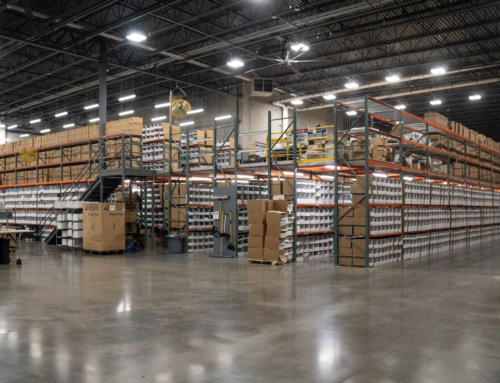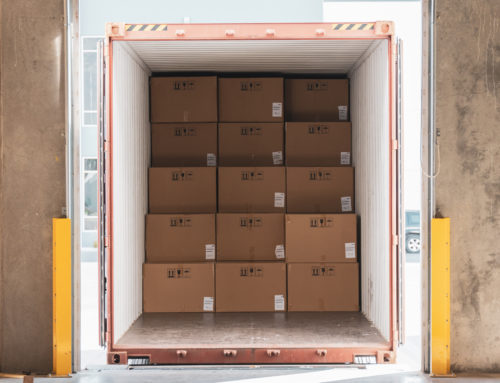If you have managed an online brand or store before, you have likely used a form of tech stacking to streamline components of your eCommerce supply chain and marketing funnel. In this day in age, these technological advancements and eCommerce integrations have effectively leveled the playing field, making it easier than ever to develop and present your products and ideas to the world.
Assembling effective solutions to enhance your brand’s position and meet consumer demands requires an optimal stack or combination of technology to identify gaps in your supply chain and help you find the appropriate ways to streamline the process. From your online selling platform to fulfillment logistics to marketing data, choosing the right integrations to build your technology stack involves experience and an idea of what works best and why. As a result, let’s dive in.
What is a technology stack?
A technology stack or tech stack is a combination of frameworks, applications, platforms, and solutions that work in harmony to smoothly manage and run your eCommerce business.
These technologies and integrations are all unique in the way they work together. Rather than an all-in-one tool or fix for your eCommerce store needs, stacking tech means pairing cutting-edge eCommerce platforms with supplementary solutions that focus on specific touchpoints like payment processing or inventory management.
These major areas of focus include:

Why is stacking eCommerce technology important?
The eCommerce world is an ultra-competitive space, so having the right tech framework in place can help give you a leg up on the competition in minor ways that make a world of difference for end customers. Logistical prowess and automating time-consuming processes increase efficiency for online brands, whether B2C or B2B, establishing a relationship with customers they can trust. Enhancing the customer experience through tech stacking helps you cut costs and increase customer satisfaction. There is arguably no better method to grow your business and keep customers happily shopping with you than tech stacking.
Web development stacking:
Front-end
The user interface or the front-end of your eCommerce store involves all the external-facing applications that website visitors interact with while shopping. The development and design of your online store take the most time, energy, and money to polish, given it’s the key to making it user-friendly and aesthetically pleasing for customers.
Back-end
The back end of your website is responsible for the functionality of your platform. Server-facing applications and languages work together to support your website and software solutions. While a majority of back-end development is custom, some of the main categories of these functionalities include:
- Web-Server: A computer software system that runs your website storing, processing, and delivering content to users in real-time based on requests.
- Databases: These help to access and manage relevant eCommerce information and operations (DynamoDB, MySQL, and PostgreSQL).
- Storage: A way to organize vital data on customers, website insights, and data analytics.
Where and how to stack your tech?
Ecommerce selling platforms
An eCommerce platform is the content management and commerce engine used to sell cataloged products, register purchases, and manage relationships with customers and online retailers. Once you have a custom domain and name, some of the leading platform options include:
More than that, it is not uncommon to sell on multiple platforms or channels like Amazon, eBay, Walmart, or social media platforms like Instagram.
Order & inventory management
Efficient order management and accurate inventory tracking involve funneling orders from different sales through a robust inventory management system. This system allows for real-time stock audits, demand forecasting insights, and order tracking, all from an easy-to-use dashboard.
Some of the most functional order and inventory management solutions include:
At Drive Fulfillment, our custom comprehensive fulfillment technology allows you to track shipping, receiving, inventory levels, orders, and reports from built-in inventory management tools. DriveLine powered by Deposco is a robust solution for managing inventory and integrates with any online store or marketplace.
Fulfillment & shipping
Stacking tech to automate your order fulfillment and eCommerce shipping is one of the most important investments you can make as a business owner. These solutions optimize the picking, packing, and shipping of orders, all from an easy-to-use virtual platform. The best fulfillment and shipping solutions help save precious money and time by automatically selecting optimal routes and carrier rates based on warehouse locations package destinations.
Some of the best technology shipping solutions include:
Never underestimate the power of logistics automation. These direct integrations provide the visibility, clarity, and speed required to stay ahead of competitors.
Order and Payment processing
Always equip your eCommerce store with the right technology to optimize the customer checkout and payment processing steps. Speeding up the order-to-cash process not only helps you put more money in your pocket faster but also increases the percentage of conversions. An automated order/payment procession system integrated into your online store automatically gives customers the ease of payment and real-time notifications that their order is processed.
Some of the most popular order/payment processing integrations include:
As a general rule of thumb, tech integrations on conversion-centered eCommerce touchpoints are often always a good investment.
Returns management
Managing product returns is an unavoidable aspect of running an eCommerce business. Providing an exceptional customer experience means optimizing your returns management protocols with tech stacking so that they can be processed with as much ease as shipping and delivery tasks.
Some of the most effective returns management technology includes:
Data and analytics
Collecting, recording, and displaying everything from real-time customer data to purchasing habits through stacked technology is one of the most crucial methods to increase performance and understand customers on a deeper level.
Using programs Google Analytics allows for valuable data on websites and consumer behavior. Combining your WMS Warehouse management system like Driveline with analytics technology helps support accurate inventory forecasting, distribution, and supply chain planning. This gives you all the inventory management and logistical data you need to make the most informed decisions.
- Ahrefs
- Google analytics
Marketing
Even if you can have the best product in the world, it still requires enticing customers through automated marketing tools like email marketing, social media, and incentive-based reward programs. Setting up the right marketing tech stack means you and your team can focus on your key initiatives and tasks instead of an overload of time-consuming busywork.
Some of the most popular and effective marketing technology tools include:
- Mailchimp (email marketing)
- Co-schedule (social media management)
- Canva (graphic design)
- Adobe Creative Suite (design)
- Linktree (redirects)
- Facebook Ad Manager (advertising)
- Klaviyo (marketing)
Work to find the right marketing tech stack that works for you. Depending on your goals and objectives, find the right mix of programs that optimize your workload and save you time. If you’re unfamiliar or don’t have the time to dedicate to marketing, agencies like Drive Digital have the team and expertise to take on any marketing challenge or incentives programs. Putting all your fulfillment and digital marketing under the same roof allows for seamless exchange and complete transparency into all of your operations. At Drive Fulfillment, we are in a unique position of accurately delivering across all of these channels.
Tech stacking tips to Consider:
Don’t overload: Most website selling platforms use plugins to optimize the functionality. While they are each useful in their own way, adding too many plugins can significantly slow down the website and taint the customer experience. Luckily, most platforms like Shopify and BigCommerce optimize integration space and make it possible to build out the most high-functioning site without slowing it down.
Use modern tools with flexibility: When it comes down to the languages and framework of your website, always go for the most modern and flexible features. Even with complex websites, having the ability to run tests and make changes on the fly is well worth the effort. For example, Shopify has over 70 easily customizable templates that give you full control over design, including HTML and CSS, so that you can build out your website, optimize your checkout, integrate marketing, fulfillment, analytics, and shipping solutions to round out your tech stack.
Stack tech around your greatest challenges: Always circle back on areas of potential improvement like customer service or fulfillment processes. For example, if you are experiencing a high number of returns, implementing a tech solution to optimize and better handle returns can solve a world of headaches and time spent manually logging them.
Don’t rely too heavily on tech: It’s no secret that technology solves a world of challenges while improving your logical efficiency. As a word of caution, try not to rely too heavily on tech for everything. Always circle back to how the technology benefits your business, helping you save costs or keep operations lean. Collecting and analyzing data like eCommerce KPIs will help you pinpoint inefficiencies and make informed decisions of where technology can be of the most utility.






